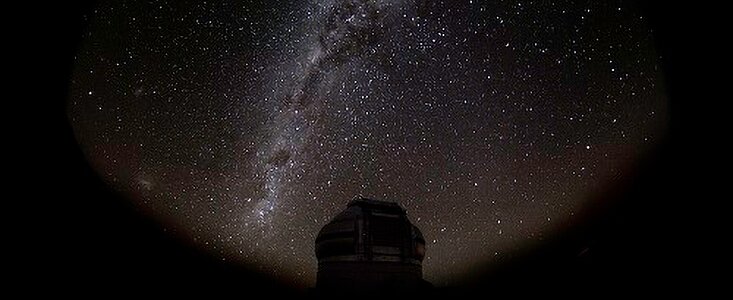Gemini Helps Confirm Dark “Noodles” in Milky Way
21 January 2016
Today, in the journal Science, Australian scientist Keith Bannister announced findings that might help solve a 30-year old mystery.
Bannister and his team used Gemini to provide baseline optical observations of a quasar (PKS 1939-315) which has displayed wild fluctuations in its radio emissions. The Gemini Director’s Discretionary Time program, using the Gemini Multi-Object Spectrograph at the Gemini South telescope, confirmed that the optical light is constant, while the radio emission changes. The steady optical light, concurrent with the radio variations, means that earlier optical surveys for dark clouds would not have found these. Also, these lenses must not be dusty, because dust would have reddened the quasar’s light.
The researchers conclude that the radio waves from the quasar (observed with Australia’s CSIRO Compact Array) are likely being focused and defocused by a thin “atmosphere” of electrically charged particles in our Milky Way Galaxy. According to the team, these clumps of gas are thought to take on shapes that are similar to lasagna noodles seen edge- on. The team speculates that the clumps could take on a variety of shapes from hazelnuts to noodles with sizes comparable to the diameter of the Earth’s orbit around the Sun.
About the Release
| Release No.: | gemini1601 |
| Name: | PKS 1939-315 |
| Facility: | Gemini South |
| Instruments: | GMOS-S |
| Science data: | 2016Sci...351..354B |


